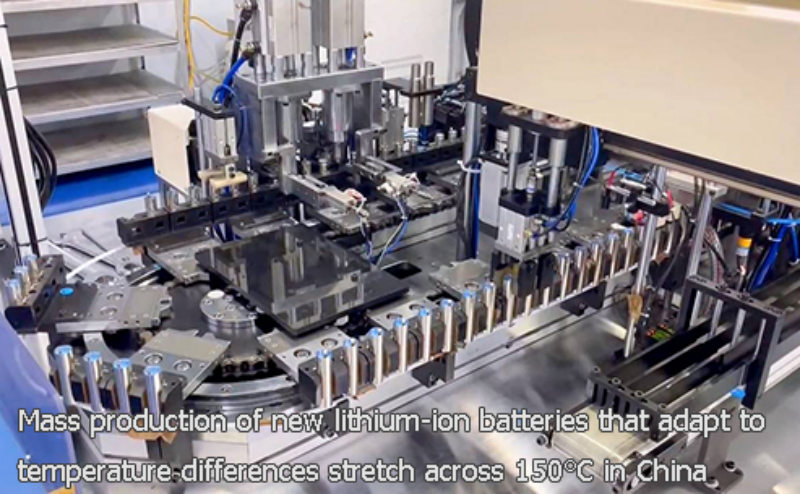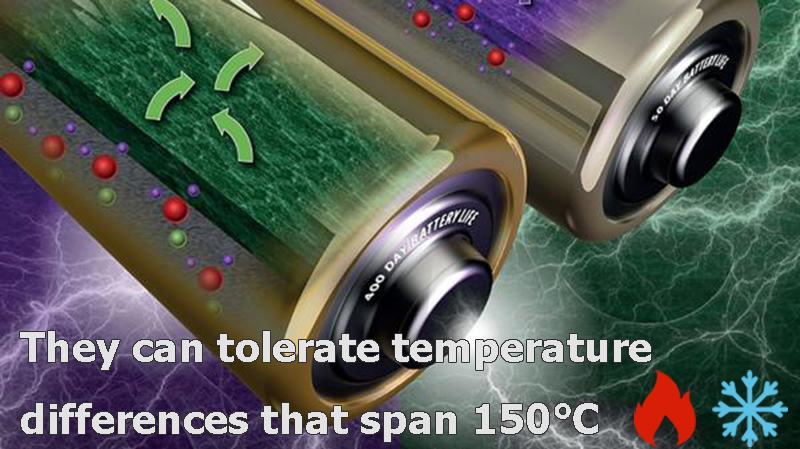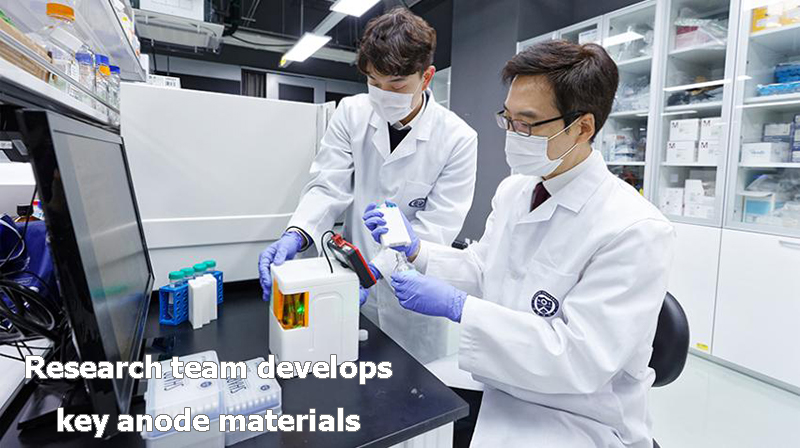
Main content:
Such a high-performance lithium batteries are quite real, they can withstand hot climates and cold environment, they charges quickly and have low cost. A new-style lithium-ion battery adaptable to temperature differences across 150°C has been mass-produced in China, it is reported that this new lithium-ion battery technology developed by a research team in China has completed mass production on May 24, 2022.
Statistics show that the qualified rate of this large-scale mass production reached 99.11%, and the qualified rate of each process in the process was over 99%. The team said that this is China's first battery product with a wide temperature range, low cost and long life, which is expected to break the battery industry pattern.
1.They can tolerate temperature differences that span 150℃
From automobiles to electronic products, lithium-ion batteries have already penetrated into people's lives, providing power for food, clothing, housing and transportation. Relevant documents released by the Chinese government show that China has become the world's largest lithium battery consumer market for five consecutive years. However, due to the limitation of key battery materials, a major limitation of current lithium-ion batteries is that they cannot be charged at low temperatures below zero, and safety cannot be guaranteed at high temperatures above 50℃.

China is a vast territory, and the temperature varies greatly with regions and seasons. The temperature in the northern region can be as low as -40℃ in winter, while the surface temperature in the southern region is as high as 50℃ in summer. Electric vehicles cannot be started and smartphones are automatically shut down in winter, and electric vehicles spontaneously ignite in summer and other circumstances occurs frequently.
To this end, the Chinese research team has spent nearly 10 years developing a new type of lithium-ion battery technology that is both frost-resistant and heat-resistant. Performance can be balanced at the same time. It is reported that the product's high and low temperature performance, cycle life, safety performance and other indicators have been tested by a third-party authority.
2.Research team develops key anode materials
What are the new aspects of the new battery? The team mainly worked on anode materials and electrolytes. It is understood that the current battery cathode material related technology is close to the "ceiling", there is still room for development of anode materials to improve performance. For this purpose, the team developed a new type of aluminum-based composite anode material.
By matching with the cathode material of commercial lithium-ion batteries, late-model ternary, lithium manganate and lithium iron phosphate batteries have been successfully developed for different application scenarios. "In addition to the characteristics of heat resistance and frost resistance, the battery products we developed also have the advantages of high safety, long battery life, fast charging and low cost." the team said.

In terms of safety performance, with the continuous use of conventional lithium batteries, lithium dendrites will be generated inside, which not only affects the charging ability, but also may pierce the separator, causing hidden dangers such as battery short circuit. However, the new aluminum-based anode developed by the team can effectively alleviate the generation of lithium dendrites under low temperature and overcharge conditions, improving safety.
In terms of endurance performance, thanks to the high theoretical capacity of the aluminum-based anode material, the energy density of the battery is 13% to 25% higher than that of traditional lithium-ion batteries, and it can achieve long battery life. Besides, due to the excellent electrical conductivity of the aluminum-based composite anode, the product also shows good fast charging performance, which can be fully charged in 20 minutes.
In terms of cost, based on the performance advantages of the aluminum-based composite anode, combined with the developed high-performance electrolyte, low-temperature battery products can get rid of the dependence on expensive nano-scale cathode materials, and the battery cost can be reduced by 10% to 30%. Furthermore, the relevant research results have formed more than 180 patent pools, including PCT international patents, Chinese invention patents, patents in the United States, Europe, Japan and South Korea, and more than 120 authorized patents.
3.This battery technology has a wide range of application scenarios
It is reported that this mass production is at the request of an electric vehicle customer, providing batches of cells for in-depth performance evaluation, and the relevant performance evaluation has met the needs of use. In fact, keeping abreast of market demand is what the team has always insisted on. "Some scenarios require normal charging and discharging at minus 40℃, while others put forward higher requirements in terms of long cycles. Focusing on the core technology and combining the actual situation, we continue to make adjustments to the product." The team said.

Related products can be used in photovoltaic energy storage, home energy storage, communication base station energy storage, rail transit, national defense construction, aerospace, polar scientific research and other fields, especially in alpine regions and subtropical regions, significantly expanding the application range of batteries.
In addition, according to an industry insider, based on the new battery technology, the team's 23 related patents rely on Shenzhen Institute of Advanced Technology, Chinese Academy of Sciences, and established REALPOWER in March 2017, with a cash investment of 25 million RMB and a registered capital of 1 billion. An international well-known authoritative expert in energy storage materials and electrochemistry pointed out in his review paper, "This achievement shows excellent long-cycle stability, which makes aluminum-based batteries have great utilization potentiality."
















